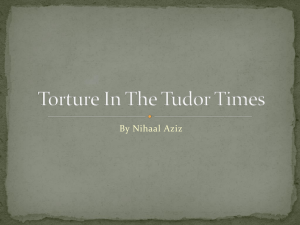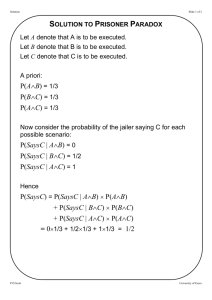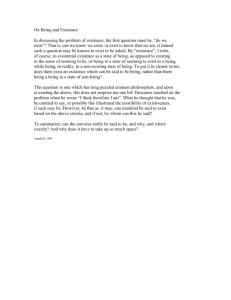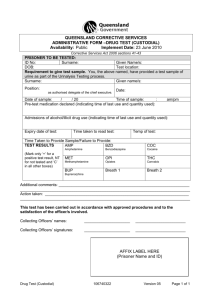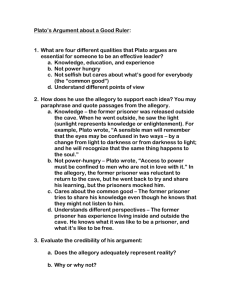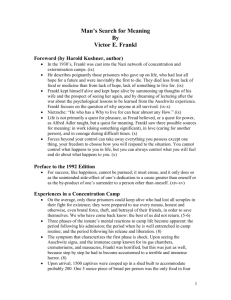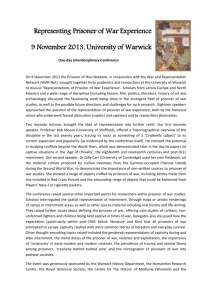Concept Guide: Frankl
advertisement
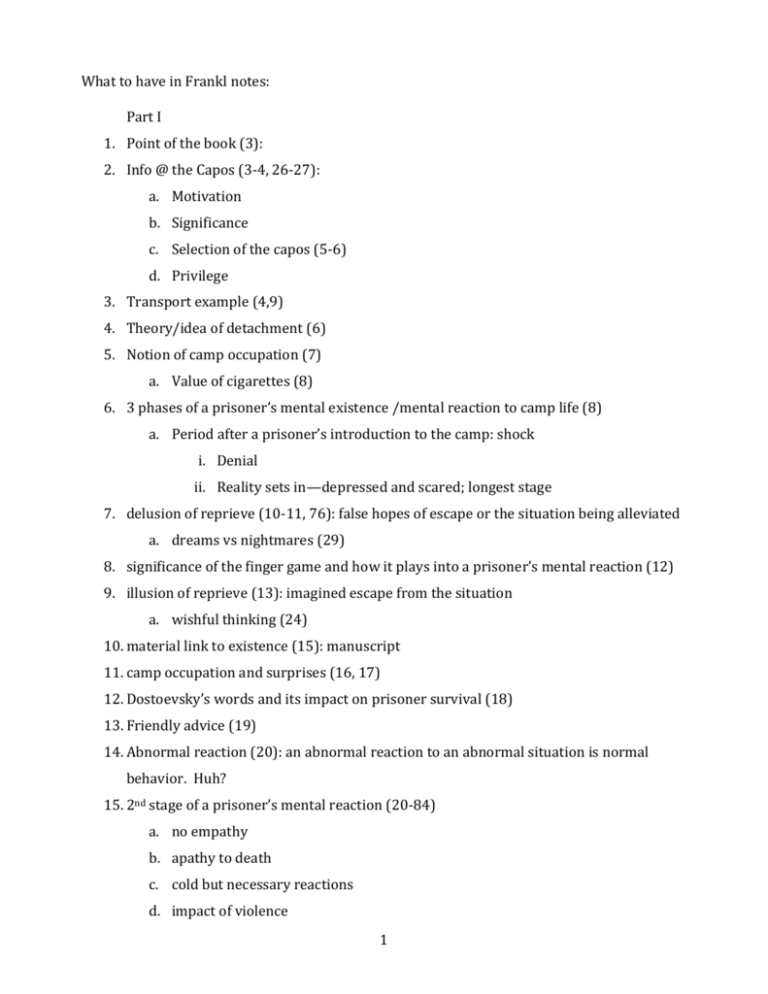
What to have in Frankl notes: Part I 1. Point of the book (3): 2. Info @ the Capos (3-4, 26-27): a. Motivation b. Significance c. Selection of the capos (5-6) d. Privilege 3. Transport example (4,9) 4. Theory/idea of detachment (6) 5. Notion of camp occupation (7) a. Value of cigarettes (8) 6. 3 phases of a prisoner’s mental existence /mental reaction to camp life (8) a. Period after a prisoner’s introduction to the camp: shock i. Denial ii. Reality sets in—depressed and scared; longest stage 7. delusion of reprieve (10-11, 76): false hopes of escape or the situation being alleviated a. dreams vs nightmares (29) 8. significance of the finger game and how it plays into a prisoner’s mental reaction (12) 9. illusion of reprieve (13): imagined escape from the situation a. wishful thinking (24) 10. material link to existence (15): manuscript 11. camp occupation and surprises (16, 17) 12. Dostoevsky’s words and its impact on prisoner survival (18) 13. Friendly advice (19) 14. Abnormal reaction (20): an abnormal reaction to an abnormal situation is normal behavior. Huh? 15. 2nd stage of a prisoner’s mental reaction (20-84) a. no empathy b. apathy to death c. cold but necessary reactions d. impact of violence 1 16. primitive level of survival (28) a. comradeship b. issue of food 17. Irony of the trip (33-34, 45)= illusion of reprieve a. Dachau: no gas chambers i. Possibility for survival 18. Cultural hibernation (34-36) a. religious vs spiritual deepening (34-36 ish) 19. truth about love (37-43ish) a. art, beauty, and nature b. violin concert c. Murderous Capo 20. Humor (16, 43,44) 21. Freedom from suffering (47) 22. Why he volunteered for typhus patients (49) 23. The loss of human existence (50-56) a. Don’t be conspicuous (51) b. Hiding 3 prisoners (52) c. Departing Moslems (53) 24. Let fate take its course (55-56, 60-62) 25. Thoughts and attempts to escape a. Attempt #1 (58) b. Attempt #2 (59) c. The resuce (60) 26. Suffering (finding meaning) (62 a. Hut example (65-66) b. Dostoevski’s saying (66) and its connection with Frankl’s view of suffering c. What is the last freedom? (66) d. Concept of suffering and death (67) e. Impact of a man’s inner strength and his outward fate (68) f. Inner hold of a prisoner and his mental reaction to camp (69, 70) g. Finis (70) 2 h. Copy the last two sentences from the second paragraph from page 72 and the first full sentence from the top of page 73. i. Copy the translation from page 74 (top) @ suffering j. Impact of a sudden loss of hope (75, 77, 76) k. Nietzsche’s quote (82) l. Infinite meaning of life (83), especially regarding suffering and death 27. Third stage of a prisoner’s mental existence (84) a. Four things that help a prisoner to overcome his situation b. Two races of men (86) c. Psychology of liberation (87-top of 88) i. Depersonalization (88) ii. Bitterness and disillusionment (91-92) 28. Copy the last sentence from page 93. Part II 29. Difference between psychoanalyst and psychotherapy (97-98, 103) a. The definition of logotherapy 30. Will to meaning a. Secondary rationalization b. “89 percent of people polled admitted that man needs ‘something’ for the sake of which to live” (99) 31. Existential frustration a. noögenic neuroses b. noo-dynamics i. quote from page 104 1. impact of tension ii. typhus patients 32. Existential vacuum a. distress and boredom 33. The meaning of life a. the essence of existence 3 i. three ways to discover the meaning of life 34. love and the meaning of suffering (hint, hint) a. “man must decide, for better or worse, what will be the monument of his existence.” (121) 35. pessimist vs. activist (121) 36. the collective neurosis (129) a. nihilism b. pan-determinism c. quote from 133-134 Part III 37. Tragic optimism (137) 38. Tragic triad (137) 39. Happiness (138) 40. Hyperintention (138-39) 41. No future generation (139) 42. Mass neurosis (141) 43. Existential vacuum (141) 44. Three ways to bring meaning to life (145-6) 45. Nihilism (152) 4
